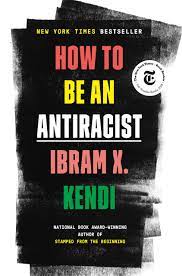Review: Dr. Ibram Kendi’s “How To Be An Antiracist”
Review: Dr. Ibram Kendi’s “How To Be An Antiracist”
By: Justin Laing | March 7, 2021 | Antiracism, Book/Media Review
Dr. Ibram Kendi’s “How to Be an Antiracist” is intended to be a relatively

simple and straightforward book, which is both its strength and weakness. The book begins with a number of definitions: “antiracism”: ideas, policies, and practices that counteract racist ideas, policies, and practices; and racism: ideas, policies, and practices that create or maintain disparities between races. A nuance that Kendi brings, is the important addition to the analysis of part of the reason people who appear to be of 100% European descent continue to be in a position to have an undue impact on our lives as Black people, i.e. racism, is that racism creates these disparities by expressing itself in two different forms: segregationist racism and assimilationist racism.
Segregationist racists believe that people of African descent are fundamentally inferior to everyone else, particularly people of European descent, and there is no redeeming us. We are inferior by nature or by curse, as in the curse placed upon Canaan by Noah, so, we should be sequestered away so that we don’t do damage to the “bloodlines” and culture of people of European descent or anyone else for that matter. Assimilationist racists, on the other hand, believe that we are inferior by culture, by nurture, and that if we were to be assimilated into European culture, we could then be saved or be fully human. In this way, missionaries who save barbarous Africans, or arts programs who provide arts to “inner city” youth could all be said to be using a form of assimilationist racism. However, and maybe most importantly, this would also show up as Black people who believe that African/Black ideas and practices of what it is to be human are fundamentally inferior and not an option if we want to achieve the greatest vision of ourselves, families and communities. Others, like the People’s Institute for Survival and Beyond, have called this internalized oppression, Dr. Carter G. Woodson has called it “The Miseducation of the Negro”. Kendi would say we are assimilationist racists.
Kendi then goes on to provide three explanations for racial inequity:
- Black people, as a group, are in this or that negative position because we are genetically inferior or inferior in God’s eyes (segregationist racists).
- Black people are in this or that negative position because our culture is inferior (assimilationist racists)
- Black people are in this or that position due to racism (antiracists)
This argument requires us to have faith in general human equality because in this book racism is a black box and is not explained as a system or process. This is not an accident. Kendi, sensibly, does not think antiracism is something of which you can convince people. You are either antiracist, or ready to be, or you are not. So, we know racism is active when we see racial inequities. Period, dot. Except White Supremacy is the dominant world view and so it does help to have some explanation of it as a process, and not simply an action, otherwise, we often tend to see the results of it and take them as natural.
In using this framework, there is also a pitfall to avoid and that is that in framing racism as the disparity between Black people and White people, you have to avoid the assimilationist frame and not set up White people as the standard and antiracism as work that brings Black people to that standard. This is another reason why we need a discussion of the process of racism and thus a weakness of a book with the intention to teach people how to be antiracist, because if the process of racism is not explained, there really is not much guidance as to the criteria of what would be an antiracist idea, policy, action, or practice. Simply to say that antiracist practices counteract racist practices is a bit of a loop.
So, while the simplicity of the book allows for a straightforward explanation of racism and antiracism, it has to be supplemented in order to help us live up to the title, particularly in an organizational context. We’ll talk about ideas on this in future posts.
